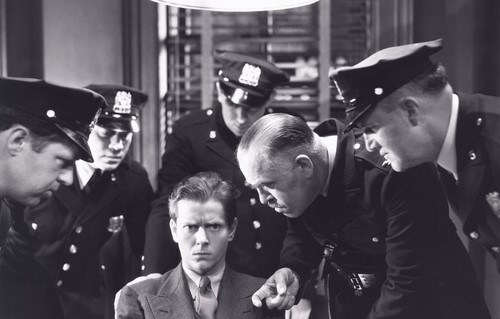You cannot see whether a suspect is lying

During a hearing, the police would like to know whether a suspect is lying, and so they take careful note of a suspect's behaviour. People often think that stuttering, looking away and fidgeting are signs that somebody is lying. However, these aspects are not connected. Certain other behaviours can be indicative of lying, such as a higher pitched voice or making fewer movements with the hands and feet. Yet less attention is paid to this behaviour, or it is interpreted incorrectly.
Nervous behaviour does not mean that a suspect is lying
For this research, the NSCR analysed sound and video recordings of police hearings, interviews and questionnaires. This revealed that nervous behaviour during a hearing can be interpreted in various ways. Lay people, in particular, think that a suspect is lying if he or she is nervous. On the other hand, everybody would be nervous during a hearing because hearings increase stress levels. Therefore, nervous behaviour more likely means that a suspect is not lying. After all, in the context of a hearing, this is “normal” behaviour. Professionals were found to think a person is lying less often than lay people. Lay people respond more often to the wrong behaviours than professionals do. As behaviour is open to various interpretations, caution should be exercised concerning the conclusions drawn, and it is advisable to increase the knowledge about non-verbal behaviour.
Images can mislead viewers
Hearings are recorded increasingly often. However, images can also distract from the content of the hearing. This is because viewers mainly pay attention to what they see, what the suspect looks like and how he or she behaves. They pay less attention to what the person says. As visible behaviour, in particular, such as looking away and fidgeting can be misleading, images can be especially misleading to the viewers. Images are nevertheless necessary to check the hearing methods used by the police properly. For example, it is not clear from a report whether the police might have exerted pressure on the suspect to obtain a statement. Furthermore, the judge cannot rely solely on the information described in a report. Images are therefore required. However, images should be interpreted more carefully, and professionals must be made more aware of the risks that images entail.
Publication details and further reading
Malsch, M., Van Zanten, J. & Elffers, H. (2018). Pinokkio’s neus: leugens en het gedrag van de verdachte in een verhoorsituatie. Delikt & Delinkwent 6, 462-477.
Malsch, M., Kranendonk, R., De Keijser, J., Elffers, H., Komter, M. & Boer, M. de (2015). Kijken, luisteren, lezen. De invloed van beeld, geluid en schrift op het oordeel over verdachtenverhoren. Apeldoorn: Politie & Wetenschap.
Share this article
Actuele berichten

